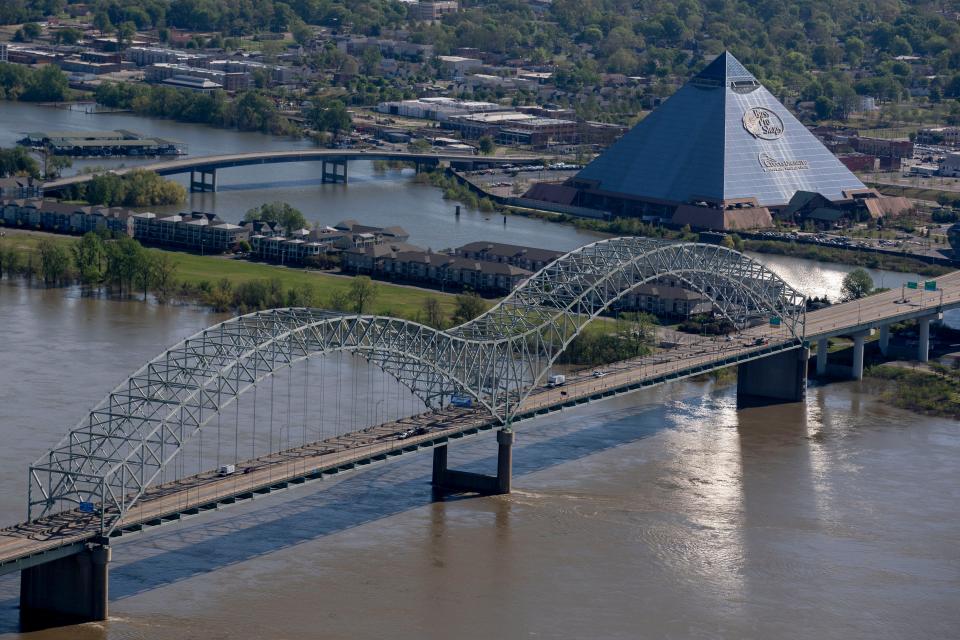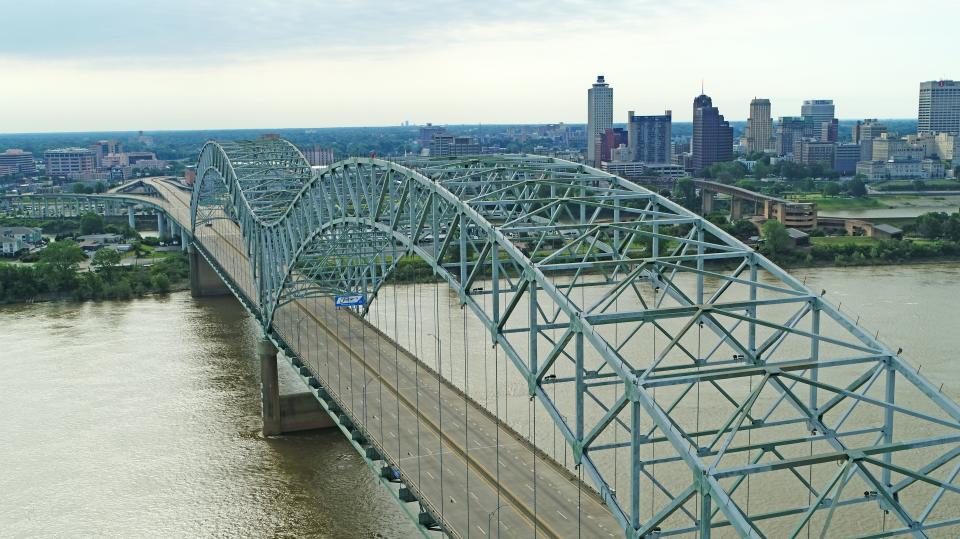One year after I-40 bridge shutdown, is Memphis closer to a third bridge?
One year ago, a crack in the Hernando de Soto bridge between Tennessee and Arkansas forced the closure of the structure, snarling traffic, disrupting commutes, burdening emergency services and throwing a wrench in national and international trade for months.
The infrastructure crisis also injected new life into long-running discussions about a third bridge across the Mississippi River for the region. It brought national attention to the crossing, including a visit from a hard hat and reflective vest-clad U.S. Department of Transportation Secretary Pete Buttigieg, a springboard for Memphis officials and business leaders to highlight what they see as the need for a third river crossing.
“If we talk about the third bridge and we talk about what it does for our region, I think we need to take a step back. I think we all need to understand that this bridge isn't a regional bridge. It is a bridge that represents how we work in America and how we move in America,” said Bill Dunavant, president and CEO of Dunavant Enterprises.
According to the Tennessee Department of Transportation, more than 40,000 vehicles cross the I-40 bridge daily, about a quarter of them trucks.
“This is not our bridge. It is America's products that come across those bridges that support our country every single day,” Dunavant said.
MEMPHIS BRIDGE SHUTDOWN: How much did it cost to fix the I-40 bridge? We have a preliminary answer.
MISSISSIPPI RIVER BRIDGES IN MEMPHIS: Tennessee lawmakers want a third bridge from Memphis to Arkansas after I-40 bridge closure
On Wednesday, the Greater Memphis Chamber hosted a virtual panel discussion bringing together transportation and public officials and business leaders to look back on the chaos and disruption that was the bridge shutdown and look ahead to where discussions on a third bridge stand.
During the Zoom panel, representatives of the Tennessee and Arkansas departments of transportation also gave an overview of the bridge shutdown and a look at how bridge inspections have changed one year out.

Bobby White, chief public policy officer for the Greater Memphis Chamber, said one positive that came out of the bridge shutdown was the sharpened focus on the need for an additional bridge. The chamber has been advocating for a third bridge for well more than a decade. While discussions continue, all parties involved agree the heavy lift would require local, state and federal partnership and a lot of federal money.
A chamber-sponsored study published in 2009 concluded a third bridge was necessary to add capacity and flexibility for future freight demand to enhance the region’s dominance in the logistics industry.
James Collins, principal and vice president of engineering consulting firm Kimley-Horn, said multiple studies on a third bridge have highlighted concerns about the age of local infrastructure. Two railroad bridges are more than 100 years old and of the interstate bridges, one is 73 years old and the other is 49. There is also seismic risk to the bridges, even though some have been retrofitted.
“This is definitely a project of national significance. It's going to take that national participation from a funding perspective in order to be able to fund the replacement bridge that we need to put out here,” Collins said.
White and Dunavant also emphasized the need for state and federal support for the third bridge project, which the chamber has dubbed “America’s River Crossing.”
Dunavant emphasized the two existing interstate bridges don’t just support interstates 40 and 55. They facilitate traffic for interstates 22 and 69 as well, which are essential transportation corridors for steel plants in Arkansas and the future Ford plant at Blue Oval City, the creation of which has put a spotlight on the region.
HERNANDO DE SOTO BRIDGE: I-40 bridge crack likely went undetected since the span was fabricated in 1970s, report finds
FROM 2021: Memphis transportation leaders detail sting of bridge closure to Pete Buttigieg
Rail service is also an essential function for one of the only two cities in the U.S. to serve five class-one railroads. Dunavant also emphasized the amount of freight traffic that moves under the bridges each day.
“We all live in a region and an area that represents America's supply chain capital,” he said.

While the implications of the bridge shutdown — and a potential third bridge — were national, they were also profoundly local. West Memphis Mayor Marco McClendon said the shutdown impacted every aspect of life for his city.
Interstate traffic poured onto residential streets, making it difficult for children to play outside in their neighborhoods and damaging municipal roads. Daily workflow was thrown into chaos for the 40% of West Memphis residents who work in Memphis or routinely have to visit the city for business purposes. West Memphis businesses saw fewer customers and emergency services had limited access to Memphis hospitals.
“This was not just a brief closing for West Memphis," McClendon said. "It was a life-changing experience and in some shape, form or fashion all citizens were affected."
Corinne S Kennedy covers economic development and healthcare for The Commercial Appeal. She can be reached via email at Corinne.Kennedy@CommercialAppeal.com
This article originally appeared on Memphis Commercial Appeal: Year after Memphis I-40 bridge shutdown, push continues for new bridge

